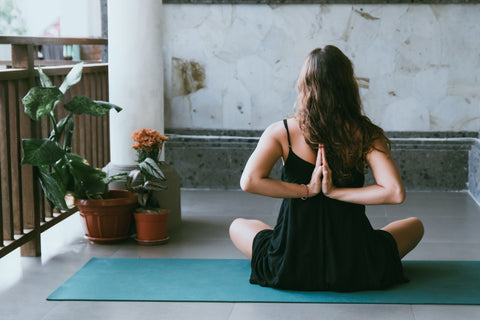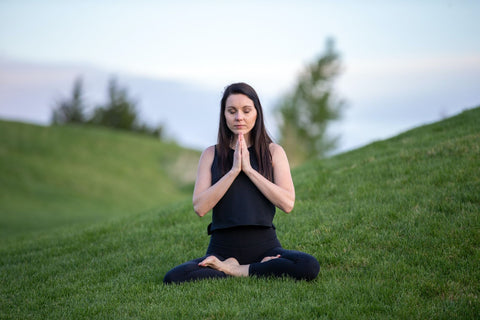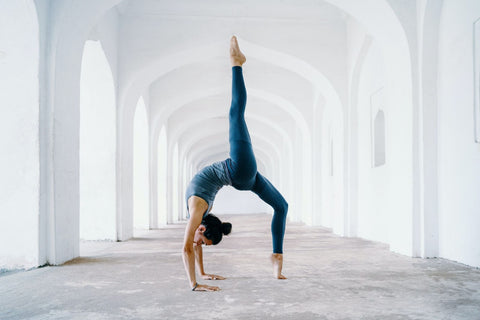
Hatha yoga is more than a physical practice--it’s a spiritual lifestyle. Today, the term can refer to many different styles of yoga, but at one time, more than 1500 years ago, it was the ethical cornerstone of everyday life for the people who learned and practiced it.
It has changed and adapted to its practitioners over time, however, and now enjoys a place as the most common form of yoga practiced today, encompassing many different offshoots. When you practice Bikram, ashtanga, Iyengar, kundalini, and most other yoga systems, you are practicing a form of hatha.
The Yogi Who Started It All
Hatha yoga philosophy was first written of by Patanjali Maharishi around 400 C.E. in a series of 196 Sutras. These Sutras outlined a philosophical system similar to Buddhism, with a path consisting of eight disciplines, each of which have spiritual significance for the practitioner. These are referred to as limbs, because all eight of them contributed to the whole. The intention behind hatha yoga philosophy was for the practitioner to be mindful of herself, and use that mindfulness in ways that contribute to the harmony and well-being of those she encounters.
The Eight Limbs of Hatha Yoga Philosophy
The Eight Limbs called upon practitioners to observe eight disciplines meant to achieve this inner and outer harmony. Far from focusing just on the body, the first five disciplines address different aspects of physical and mental well-being, and the other three focus strongly on spiritual goals. The Eight Limbs are:
- Yamas are the ethical code regarding treatment of others, hatha yoga philosophy asked for truthfulness, integrity, generosity and moderation.
- Niyamas are practiced in order to better understand the self. Hatha yoga philosophy tasked the practitioner to be disciplined and humble, willing to surrender to higher thoughts than those of everyday.
-
Asanas are the poses we are familiar with today. Aside from being great for keeping the body limber and the blood flowing, the asanas were also meant to be practiced in mindful concentration, preparing the body for meditation.

- Pranayama is a series of breathing exercises. Staggered and controlled breathing were used because it was believed that the breath was connected to life force in the body. For some perspective on this, Yama, and Niyama, “prana” means breath, and “yama” means control.
- Pratyahara is the practice of focusing inward. To understand the self, one must observe herself. This is the discipline of looking inward to observe thoughts, emotions and beliefs.
- Dharana is, on the surface, about concentration. However, the practitioner should be able to focus concentration at will, and also maintain it for long periods. This is more of a spiritual goal that leads into the next two.
- Dhyana is pure mindfulness. The immediate result of increased self-awareness is the awareness of what’s around one, and the practice of being mindful of both without having to concentrate on doing so.
- Samadhi is the long term result of enlightenment and harmony with the world. The practitioner understands how her interaction with her environment affects the world.
The Best Hatha Poses
There are so many awesome yoga poses that it’s hard to narrow down which ones are really “the best,” because they’re all the best! However, some poses are great for specific things. Here are a few:
- Tree pose (Tadasana) - this one is specifically meant to increase focus and the connection between body and mind, and you have to concentrate to maintain balance.
- Locust pose (Salabhasana) - holding this pose works the back of the legs and the buttocks, reducing the symptoms of sciatica and strengthening the upper spine.
-
Cat-Cow poses (Marjari-Asana) - in Cat pose, you are on all fours, arching your back. In Cow pose, you also tuck your chin in. This is a great stretch for the back that also relaxes you.

- Warrior pose (Virabhadrasana I-V) - the three traditional Warrior poses are about lengthening the spine, and two more variations have emerged that enhance this classic.
Hatha yoga is just one of many practices that give so many individuals around the world a connection to mindfulness and spirituality. The next time you’re in the studio, talk to your fellow yogis about the philosophy of hatha yoga and how you can apply it to everyday life.








